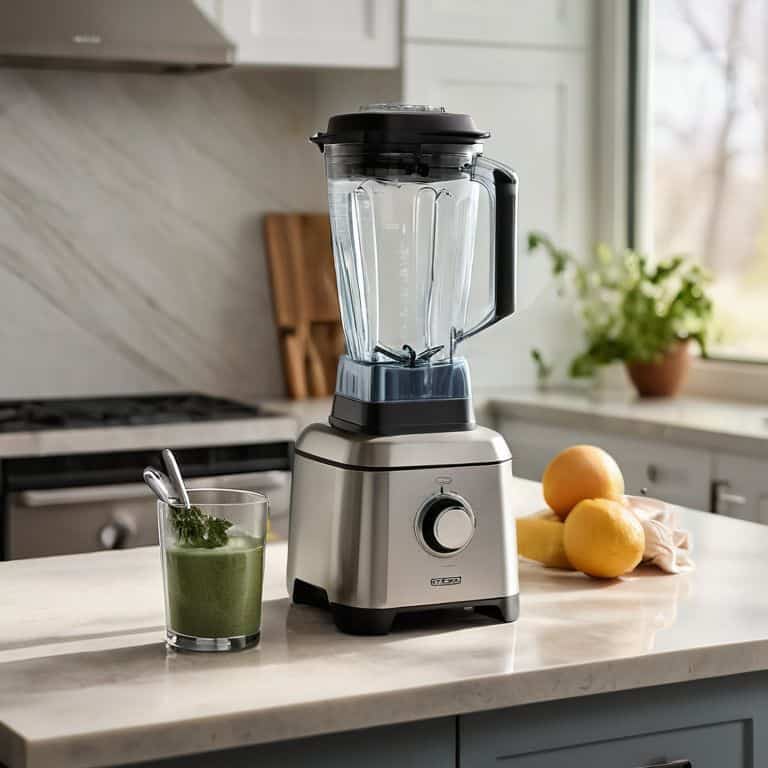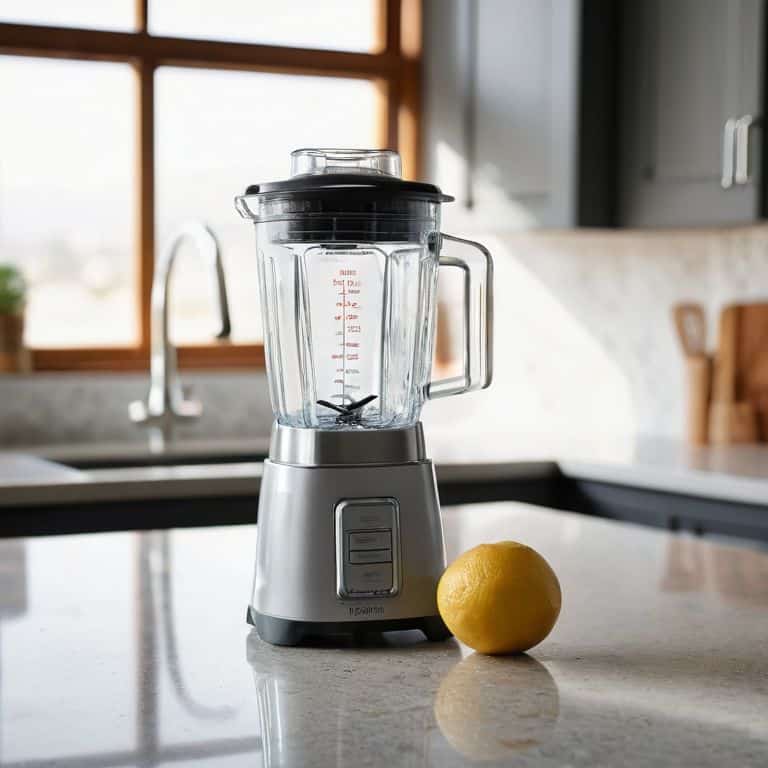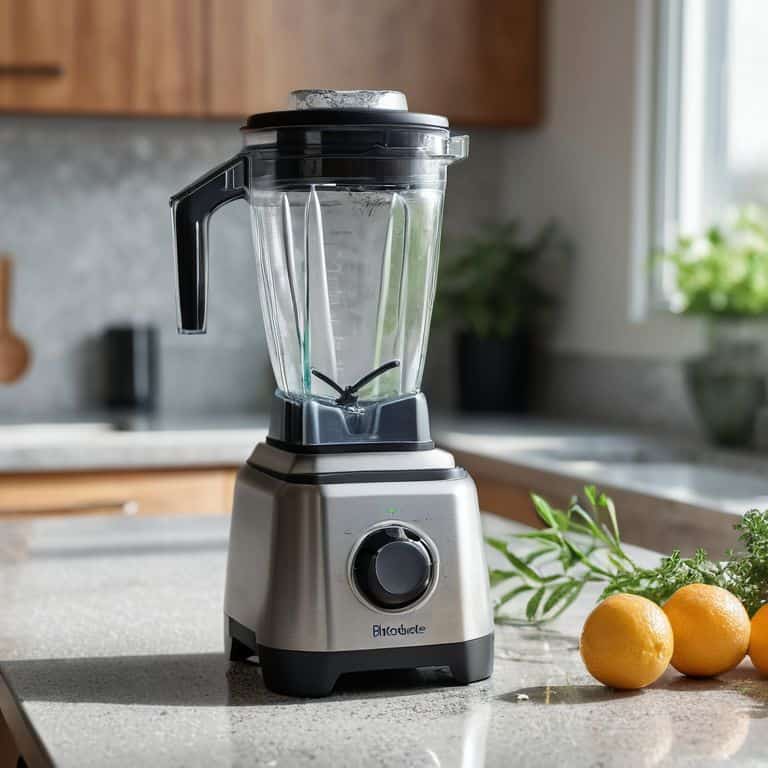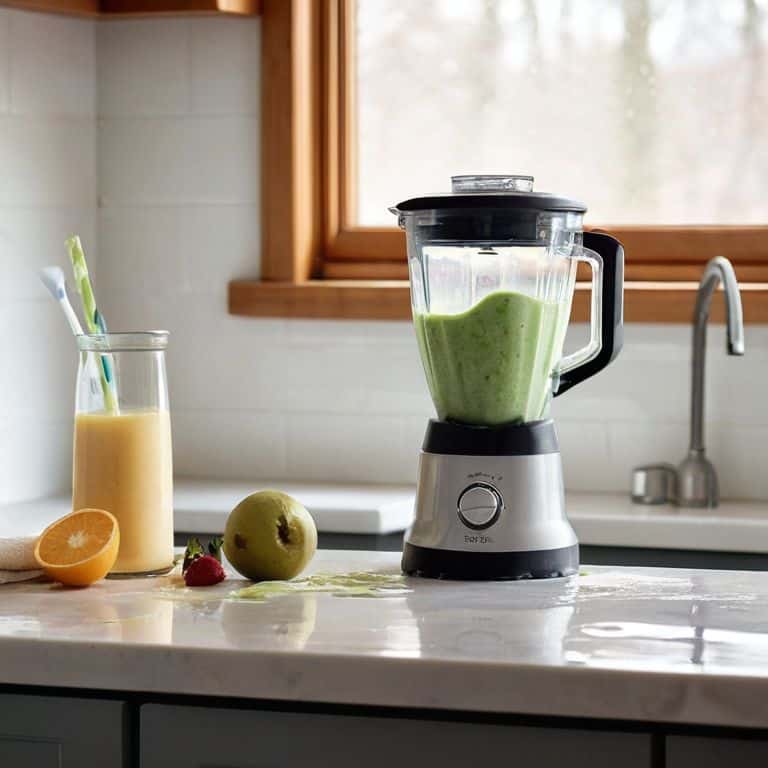I still remember the day I had to deep clean my blender after a particularly messy experiment in the kitchen lab. It was a real blender blowout, with stubborn stains and a lingering smell that refused to budge. As a kitchen product tester, I’ve learned that how to clean your blender properly is not just about tossing some soap and water in, but about understanding the intricacies of your appliance and giving it the TLC it deserves. I’ve seen far too many blenders fall victim to neglect, their performance dwindling over time due to poor maintenance.
In this article, I’ll share my no-nonsense approach to cleaning your blender, gleaned from years of testing and experimentation. You’ll learn the best practices for tackling tough stains, removing lingering odors, and maintaining your blender’s optimal performance. I’ll cut through the marketing hype and give you practical, data-driven advice on how to keep your blender in top shape, so you can focus on creating delicious meals and treats without the hassle of a poorly performing appliance. By the end of this guide, you’ll be equipped with the knowledge to clean your blender like a pro and keep it running smoothly for years to come.
Table of Contents
Guide Overview: What You'll Need

Total Time: 30 minutes
Estimated Cost: $0 – $5
Difficulty Level: Easy
Tools Required
- Soft brush (for removing large food particles)
- Mild dish soap (for cleaning the blender)
- Warm water (for rinsing the blender)
- Microfiber cloth (for drying the blender)
- Long-handled brush (for cleaning hard-to-reach areas, approximately 12 inches long)
Supplies & Materials
- Baking soda (for removing tough stains)
- White vinegar (for descaling and sanitizing the blender)
- Lemon juice (optional, for removing odors)
Step-by-Step Instructions
- 1. First, unplug your blender from the power source to avoid any accidents or electrical shocks. This is a crucial step that many people overlook, but trust me, it’s essential for your safety. I’ve seen my fair share of close calls in the kitchen lab, and I always stress the importance of being cautious when it comes to electrical appliances.
- 2. Next, disassemble the blender as much as possible, removing any detachable parts such as the pitcher, lid, and blades. This will give you access to all the areas that need cleaning. Be sure to set aside any small parts, like gaskets or seals, to prevent them from getting lost or misplaced.
- 3. Now it’s time to tackle the tough stains. Fill the blender pitcher with warm water and add a tablespoon of mild dish soap. Let it soak for about 30 minutes to help loosen any stubborn food residue. I like to use a gentle cleanser that’s specifically designed for cleaning kitchen appliances, as it’s usually pH-balanced and won’t leave any harsh chemical residues.
- 4. After soaking, use a soft-bristled brush to scrub away any remaining food particles and stains. Be gentle, as you don’t want to scratch the blender’s surfaces. I find that a brush with flexible bristles works best for getting into tight spaces and corners.
- 5. Once you’ve scrubbed all the parts, rinse them thoroughly with warm water to remove any soap residue. This is an important step, as you don’t want any soap leftovers affecting the taste of your future blends. I like to rinse each part at least twice to be sure.
- 6. To sanitize the blender, mix equal parts water and white vinegar in the pitcher and blend on high speed for about 10 seconds. This will help kill any bacteria and germs that may be lurking in the blender. I always sanitize my blender after cleaning, as it gives me peace of mind knowing that it’s completely clean and hygienic.
- 7. Finally, dry the blender thoroughly with a towel, paying extra attention to any crevices or areas where water may collect. This will help prevent water spots and mineral deposits from forming. I like to dry my blender by hand, as it ensures that all parts are completely dry and ready for their next use.
How to Clean Your Blender

When it comes to blender maintenance tips, I always stress the importance of consistency. Cleaning your blender after every use may seem like a chore, but it’s essential to prevent the buildup of stubborn stains. To make the process easier, I recommend incorporating natural blender cleaning solutions into your routine, such as a mixture of equal parts water and white vinegar.
In my experience, removing stubborn stains can be a challenge, especially if you’ve left your blender unattended for too long. To avoid this, I suggest establishing a blender cleaning schedule that works for you. This could be as simple as setting a reminder to clean your blender every week or after a particularly tough blending session. By doing so, you’ll be able to prevent the growth of bacteria and keep your blender in top condition.
To take your blender cleaning to the next level, consider sanitizing blender parts on a regular basis. This can be done by soaking the parts in hot soapy water or using a sanitize cycle on your dishwasher. By following these tips, you’ll be able to keep your blender in great condition and avoid common blender cleaning mistakes that can lead to a decrease in performance over time.
Blender Maintenance Tips Exposed
To keep your blender in top shape, I’ve learned a few maintenance tips that make all the difference. Regularly checking and replacing the blender’s seals and gaskets is crucial – a simple worn-out seal can lead to messy cleanups and poor performance. I also make it a point to dry my blender immediately after cleaning to prevent any water spots or mineral deposits.
In my kitchen lab, I’ve found that a weekly deep clean and monthly thorough descaling can work wonders for maintaining the blender’s efficiency and longevity. By incorporating these habits into your routine, you’ll not only ensure your blender stays in great condition but also prolong its lifespan, giving you the best value for your investment.
Removing Stubborn Stains Like a Pro
To tackle those pesky, stuck-on stains, I swear by a mixture of equal parts water and white vinegar. I let it soak for about 30 minutes, then blend on high for a few seconds to loosen any remaining grime. For tougher cases, I’ve found that applying a small amount of baking soda directly to the stain, letting it sit overnight, and then rinsing with warm water does the trick. It’s all about being methodical and patient – no harsh chemicals or abrasive scrubbers needed. By taking the time to remove these stains, you’ll be extending the life of your blender and keeping it in top working condition.
Blender Cleaning Hacks: 5 Tips to Make Your Life Easier

- Daily Rinse: I make it a habit to quickly rinse my blender after each use to prevent any stubborn stains from forming
- Deep Clean Cycle: Every week, I dedicate some time to thoroughly cleaning my blender, including the blades, lid, and base, to keep it in top condition
- Soap and Warm Water: For tougher stains, I find that soaking the blender parts in warm soapy water does the trick, just be sure to rinse thoroughly to avoid any soap residue
- Vinegar and Baking Soda: For an extra deep clean, I mix equal parts water and white vinegar in the blender, add a tablespoon of baking soda, and blend on high for a few seconds – the results are astounding
- Dry and Store: After cleaning, I always dry my blender thoroughly and store it in a dry place to prevent any water spots or mineral deposits from forming, it’s all about maintaining that ‘cost-per-use’ value
Key Takeaways for a Sparkling Blender
Regular cleaning and maintenance can extend the lifespan of your blender and ensure optimal performance, so make it a habit to clean your blender after every use
Removing stubborn stains requires a combination of the right cleaning solutions and techniques, such as soaking and scrubbing, to prevent bacterial growth and maintain hygiene
By following a systematic approach to cleaning and maintaining your blender, you can prevent common issues like clogged blades and motor burnout, ultimately saving you time and money in the long run
The Science of Sparkle
A clean blender isn’t just a matter of rinsing out last night’s smoothie – it’s about creating a sterile environment that ensures every blend is a healthy one, which is why I always say that a good cleaning routine is the secret ingredient to making your blender a trusted kitchen companion, not a bacterial breeding ground.
Katherine "Kate" Reed
Conclusion: Blender Bliss is Just a Cleaning Away
In the world of kitchen appliances, a clean bill of health is just as important as a sleek design. By following the steps outlined in this guide, you’ll be well on your way to extending the life of your trusty blender. Remember, regular maintenance is key to preventing stubborn stains and bacterial buildup. From dismantling and washing each part to tackling tough stains with a scientific approach, we’ve covered it all. By making these habits a part of your routine, you’ll enjoy a blender that performs at its best, every time.
As you put your newly cleaned blender back to work, take a moment to appreciate the joy of a job well done. There’s something satisfying about knowing you’ve taken care of your kitchen companion, and that it will continue to whip up delicious meals for years to come. So go ahead, blend those smoothies, puree those soups, and mix those batters with confidence. With a clean blender and a clear conscience, you’ll be cooking up a storm in no time. Happy blending, and don’t forget to stay tuned for more kitchen hacks and product reviews from a discerning foodie’s perspective!
Frequently Asked Questions
What's the best way to remove stuck-on food from my blender's blades?
For stuck-on food, I swear by a 1:1 water and white vinegar soak. Fill the blender with the solution, let it sit for 30 minutes, then scrub those blades with a soft brush. It’s a game-changer – trust me, I’ve tested it on my own blender after a particularly messy smoothie experiment.
Can I put my blender parts in the dishwasher for a deep clean?
Honestly, I’ve tried it, and the results are mixed. Some blender parts are dishwasher-safe, but I’ve found that extreme heat can warp or degrade certain materials. Check your manual, but I recommend hand-washing to be safe. It’s a bit more elbow grease, but trust me, it’s worth preserving your investment.
How often should I be cleaning my blender to prevent bacterial growth?
Honestly, I clean my blender after every use, but if you’re short on time, aim for a deep clean at least once a week. I track my cleaning schedule in my kitchen spreadsheet to ensure I’m staying on top of it – it’s worth it to prevent bacterial growth and keep my blender in top shape.
